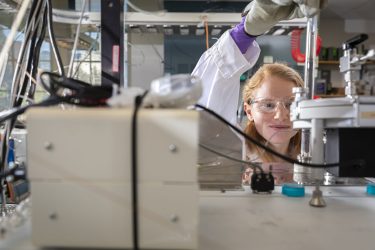
A prominent 2019 study used ice cores in Antarctica to suggest that marine productivity in the North Atlantic had declined by 10% during the industrial era, with worrying implications that the trend might continue.
But new research led by the University of Washington shows that marine phytoplankton — on which larger organisms throughout the marine ecosystem depend — may be more stable than believed in the North Atlantic. The team’s analysis of an ice core going back 800 years shows that a more complex atmospheric process may explain the recent trends.
The study was published the week of Nov. 13 in the Proceedings of the National Academy of Sciences.
Tiny floating photosynthetic organisms known as phytoplankton form the base of the marine ecosystem. These microscopic creatures are also important to the planet as a whole, producing roughly half the oxygen in Earth’s atmosphere.
Since phytoplankton are hard to count, scientists attempt to measure their abundance in other ways. Phytoplankton emit dimethyl sulfide, an odorous gas that gives beaches their distinctive smell. Once airborne, the dimethyl sulfide converts to methanesulfonic acid, or MSA, and sulfate. These eventually fall out onto land or snow, making ice cores one way to measure past population sizes.
“Greenland ice cores show a decline in MSA concentrations over the industrial era, which was concluded to be a sign of declining primary productivity in the North Atlantic,” said lead author Ursula Jongebloed, a UW doctoral student in atmospheric sciences. “But our study of sulfate in a Greenland ice core shows that MSA alone can’t tell us the whole story when it comes to primary productivity.”
Read more at UW News »
